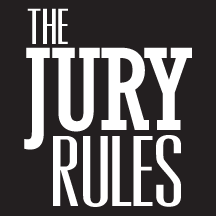How to Admit a Summary
[C]harts and diagrams designed to summarize or perhaps emphasize the testimony of witnesses are, within the discretion of the trial court, admissible into evidence. This assumes, of course, that the testimony summarized is admissible and already before the jury. We recognize that such summaries are useful and oftentimes essential, particularly in complicated lawsuits, to expedite trials and to aid juries in recalling the testimony of witnesses.[1]
Our goal as trial lawyers is to synthesize from the mountains of documents, volumes of testimony and a mass of confusion a concise, credible explanation of what happened. Moreover, the explanation must be a coherent and persuasive story that allows our client’s version of the facts to come through clearly and comprehensibly.
Consider this problem: thirteen plaintiffs contend that Acme’s operations at its local plant are a nuisance and have diminished the value of plaintiffs’ property. You have great evidence that the county tax appraiser has increased the value of each plaintiffs’ home every year for the last three years, including last year after the Acme production plant went operational.
You can make this point with each of the thirteen plaintiffs as they testify, but your point would be defuse, repetitive and boring. How do you organize and synthesize the property valuation data for all thirteen plaintiffs to make your point powerfully and persuasively?
The recipe is easy: You call the county tax appraiser, create a chart that summarizes the tax data and apply liberal amounts of Rule 1006. Create a chart that compiles all thirteen property tax appraisals for all three years into one single chart. So long as the county tax appraiser confirms that (1) the data is accurate, (2) the originals were made available to opposing counsel and (3) the data is voluminous, most judges (except for the most strict “evidentiarian”) will admit your summary exhibit. Be sure to add a line in your summary that shows the average annual value increase to really drive your point home. Here is how it would sound:
Q1: Now Mr. Tax Appraiser, as the County’s highest tax official have you reviewed the appraisals for each of the Plaintiffs’ property?
A1: Yes.
Q2: And the results of your appraisals have previously been admitted as Exhibits 13-26 in this trial
A2: Yes.
Q3: Based on those documents, have you prepared Exhibit 27, which is a summary of these property values and their percentage increase?
A3: Yes.
Q4: Are the values and percentage increases for each of the 13 plaintiffs’ property fairly and accurately reflected in Exhibit 27?
A4: Yes.
Q5: Move to admit Exhibit 27.
Judge: Exhibit 27 is admitted.
Q6: Mr. Tax Appraiser, as the highest tax official in the county, can you tell the jury how much the average value of the plaintiffs’ property increased in the year Acme’s plant went into operation?
A6: Yes, 6.2 percent increase on average.
Q7: In your professional opinion, did the plaintiffs’ properties go up or down in the year Acme’s plant went into operation?
A7: The average property increased in percent.
Once in evidence, your self-created, wonderfully argumentative and powerfully persuasive chart goes into the jury room and continues to make your points long after you have stopped talking. If you are lucky, one of your friendly jurors will hold your demonstrative evidence up during deliberation and repeat your arguments based on the chart. What could be better than a juror wielding your own demonstrative evidence to make your point long after you sit down?
1. Speier v. Webster College, 616 SW 2d 617 (Tex. 1981).








